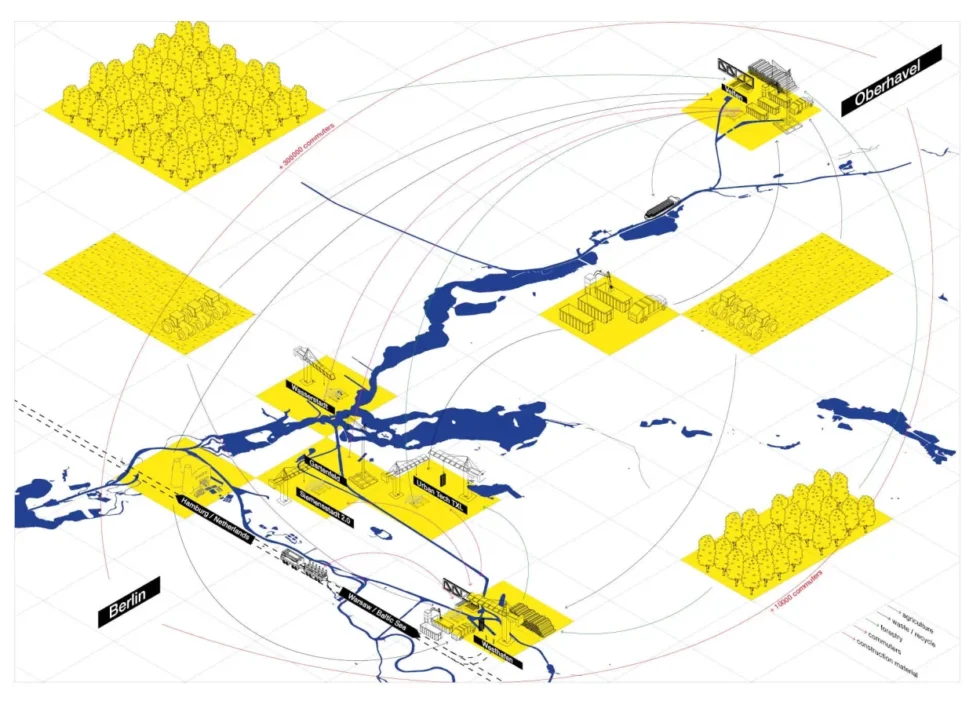Route 2 – BERLIN XX XL
Paul Strobel, Diogo Jeremias, Carolin Lichtenstein, Tino Imsirovic, Tom Rawson
This project explores future trajectories between Berlin and Brandenburg through a case study. The focus is set on work on different scales – from large scale analysis to concrete interventions and follows one of its transiting infrastructures – from Spandauer Schiffahrtskanal via Havel to Veltener Stichkanal.


The areas are imagined under the different circumstances of 2040.

As a result of the thorough large scale analysis, three strategic sites were chosen to be further investigated:
01. Velten Harbour
The “Gewerbegebiet Berliner Straße” is to be restructured in order to meet the economic and social requirements of the municipality and also strengthen its position as a logistic hub within the metropolitan region. A “Material Library” as a platform to restore recycled building material and utilize it in new projects, will be implemented. Moreover, new bridges and connections shall provide access to the eastern forest and make the logistic processes in the harbour area visible by turning them into an attraction – and urban industrial theatre.

02. Westhafen
The site must be reorganized in line with the ecological concepts defended by the proposal at the local and city scale, but also respect the demands and requirements of the logistics system. Considering a circular economic system, the harbour must be understood as supporting activities belonging to a global service network. Given its strategic position in the city, it is important to open up the site for activities in public nature.

03. BSK 0-8
The new developments along `BSK 0-8‘ will benefit greatly from the interventions and new urban flows generated by Velton Harbour and Westhafen. The canal will be instrumental in the transportation & delivery of construction material and the removal of recyclable material.
The site also sits within a green belt which must be protected and enhanced, this includes new public intervention, the advancement of the local allotment gardens and improved traversability between green spaces.


The whole route connecting all three areas operates in a systemic flow of goods and people, which form a system of interaction and exchange.




